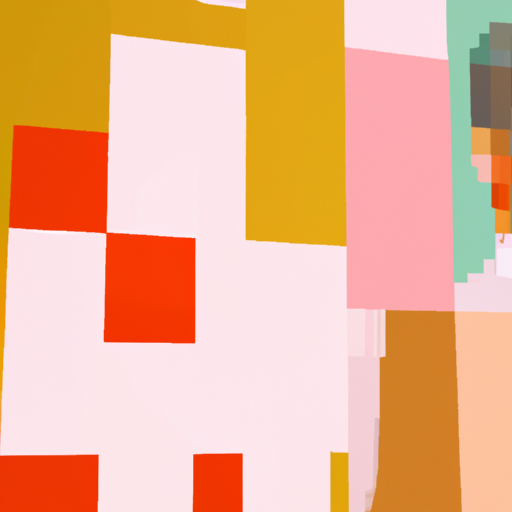
-
Table of Contents
- Motion Graphics: Transforming Still Images into Life
- What are Motion Graphics?
- The Applications of Motion Graphics
- 1. Advertising and Marketing
- 2. Film and Television
- 3. User Interface Design
- 4. Education and Training
- The Impact of Motion Graphics
- 1. Increased Engagement
- 2. Enhanced Storytelling
- 3. Improved Information Retention
- 4. Brand Differentiation
- Conclusion
Motion Graphics: Transforming Still Images into Life

When it comes to visual communication, still images have long been a powerful tool. They can convey emotions, tell stories, and capture moments frozen in time. However, in today’s fast-paced digital world, static images are often not enough to captivate and engage audiences. This is where motion graphics come into play. By adding movement, animation, and interactivity to still images, motion graphics have the ability to transform them into dynamic and captivating visual experiences. In this article, we will explore the world of motion graphics, its applications, and the impact it has on various industries.
What are Motion Graphics?
Motion graphics can be defined as the art of bringing still images to life through animation, visual effects, and other dynamic elements. They combine design principles, storytelling techniques, and animation to create visually compelling and engaging content. Unlike traditional animation, which often involves creating characters and complex narratives, motion graphics focus on enhancing existing images or graphics with movement and interactivity.
One of the key elements of motion graphics is the use of typography. By animating text, designers can convey messages in a more dynamic and impactful way. This is particularly useful in advertising, where attention-grabbing visuals and concise messaging are crucial for capturing the audience’s attention.
The Applications of Motion Graphics
Motion graphics have found their way into various industries and have become an essential tool for visual communication. Let’s explore some of the key applications of motion graphics:
1. Advertising and Marketing
In the world of advertising and marketing, motion graphics have become a go-to tool for creating eye-catching and memorable campaigns. Whether it’s a television commercial, a social media ad, or a digital billboard, motion graphics can help brands stand out from the competition and leave a lasting impression on their target audience.
For example, Nike’s “Just Do It” campaign is known for its powerful and inspiring motion graphics. By combining dynamic visuals, typography, and music, Nike effectively conveys its brand message and motivates viewers to take action.
2. Film and Television
Motion graphics play a crucial role in the film and television industry, where they are used to enhance storytelling, create visual effects, and add a touch of magic to the screen. From opening credits to special effects, motion graphics help create immersive and visually stunning experiences for viewers.
A notable example is the opening sequence of the television series “Game of Thrones.” The intricate motion graphics, combined with the iconic theme music, set the tone for each episode and contribute to the overall immersive experience of the show.
3. User Interface Design
Motion graphics have become an integral part of user interface (UI) design, particularly in the realm of mobile apps and websites. By adding subtle animations and transitions, designers can guide users through the interface, provide feedback, and create a more intuitive and engaging user experience.
Take, for instance, the popular messaging app Slack. The app uses motion graphics to indicate when a message has been sent, received, or read. These subtle animations not only provide visual feedback but also add a sense of liveliness and interactivity to the user interface.
4. Education and Training
Motion graphics have also found their way into the field of education and training. By using animation and visual effects, complex concepts can be simplified and made more accessible to learners. Whether it’s an interactive infographic, an animated tutorial, or a virtual simulation, motion graphics can enhance the learning experience and make it more engaging.
Khan Academy, an online learning platform, utilizes motion graphics to explain various subjects, from math to science. By combining visuals, narration, and interactive elements, Khan Academy makes learning more enjoyable and effective for students of all ages.
The Impact of Motion Graphics
The rise of motion graphics has had a significant impact on various industries and the way we consume visual content. Here are some key ways in which motion graphics have transformed the visual landscape:
1. Increased Engagement
Motion graphics have the power to capture and hold the viewer’s attention. By adding movement and interactivity to still images, motion graphics create a more immersive and engaging experience. This increased engagement can lead to higher brand recall, better message retention, and ultimately, more effective communication.
2. Enhanced Storytelling
Storytelling is a fundamental aspect of human communication, and motion graphics have taken it to a whole new level. By animating still images, designers can bring narratives to life, evoke emotions, and create a deeper connection with the audience. This is particularly valuable in advertising and marketing, where storytelling is essential for building brand identity and establishing an emotional connection with consumers.
3. Improved Information Retention
Studies have shown that people are more likely to remember information presented in a visual format compared to text alone. Motion graphics combine visuals, text, and animation to create a multi-sensory experience that enhances information retention. By presenting information in a visually appealing and dynamic way, motion graphics can help learners absorb and retain knowledge more effectively.
4. Brand Differentiation
In today’s crowded marketplace, standing out from the competition is crucial for businesses. Motion graphics offer a unique opportunity for brands to differentiate themselves and create a memorable visual identity. By incorporating motion graphics into their branding and marketing efforts, companies can create a distinct and recognizable style that sets them apart from their competitors.
Conclusion
Motion graphics have revolutionized the way we communicate visually. By transforming still images into dynamic and engaging experiences, motion graphics have become an essential tool in advertising, film and television, user interface design, education, and various other industries. The impact of motion graphics is evident in increased engagement, enhanced storytelling, improved information retention, and brand differentiation. As technology continues to advance, we can expect motion graphics to play an even more significant role in visual communication, pushing the boundaries of creativity and captivating audiences worldwide.
